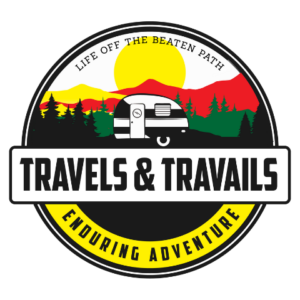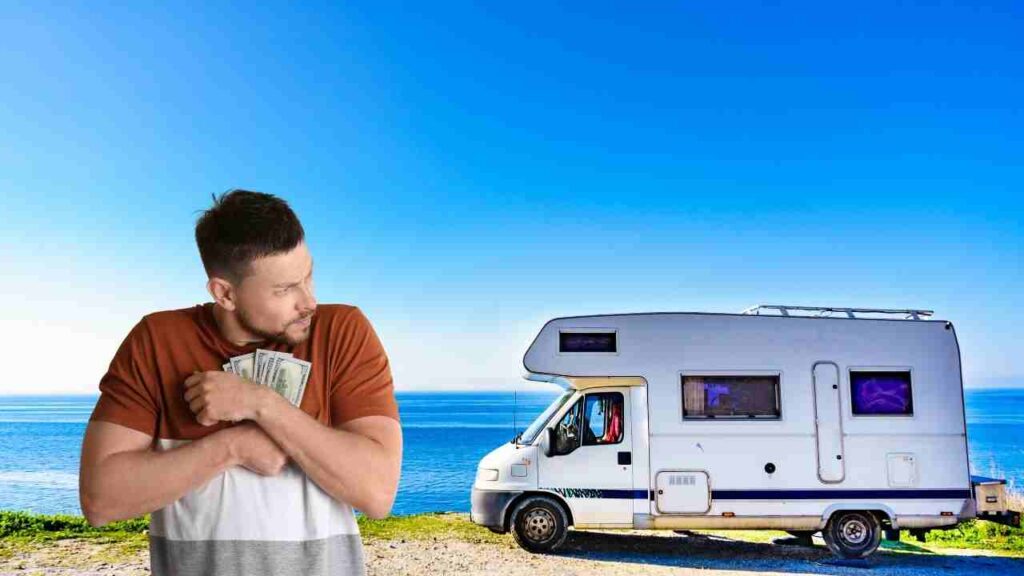
With the economy quickly going down the toilet, you’re probably looking for some ways to save money and still be able to travel in your RV. So you may ask, “What is the cheapest way to RV?”
The cheapest way to RV is by saving money in these five areas:
- Save Money On Campsites
- Save Money On Gas
- Save on Food
- Save on Activities
- Save on Gear
We’ll take a look at each of these categories to find specific ways to save money when RVing.
1. Save Money On Campsites
Besides gas, campsites are one of the biggest ticket items in your RV budget.
When you plan out your camping adventure, consider low or no cost campsites.
I wrote a whole article on money saving campsite ideas, but I’ll summarize here.
First, consider free campsites. There are several options for free campsites.
Dispersed Camping
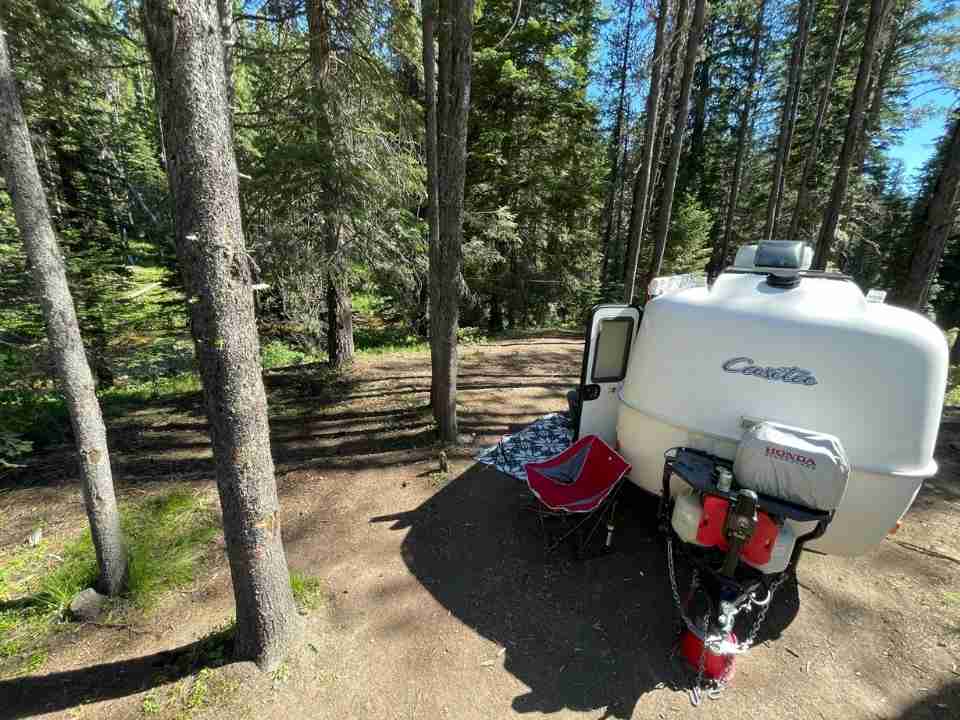
Both the National Forest and the Burea of Land Management (BLM) are options for free dispersed camping. This is one of our favorite free camping options as we can usually find beautiful and quiet campsites away from people.
The caviet to dispersed camping is that you need to be self-contained. That means that you need to have your own water, bathroom, and power. In addition, your rig will need to have a bed and an indoor kitchen.
You’ll also need to know how to find dispersed campsites. I wrote an article about 5 ways to find dispersed campsites that you can read to find out more.
In addition, I’ve written several articles about boondocking and dispersed camping that you can find here.
Harvest Hosts
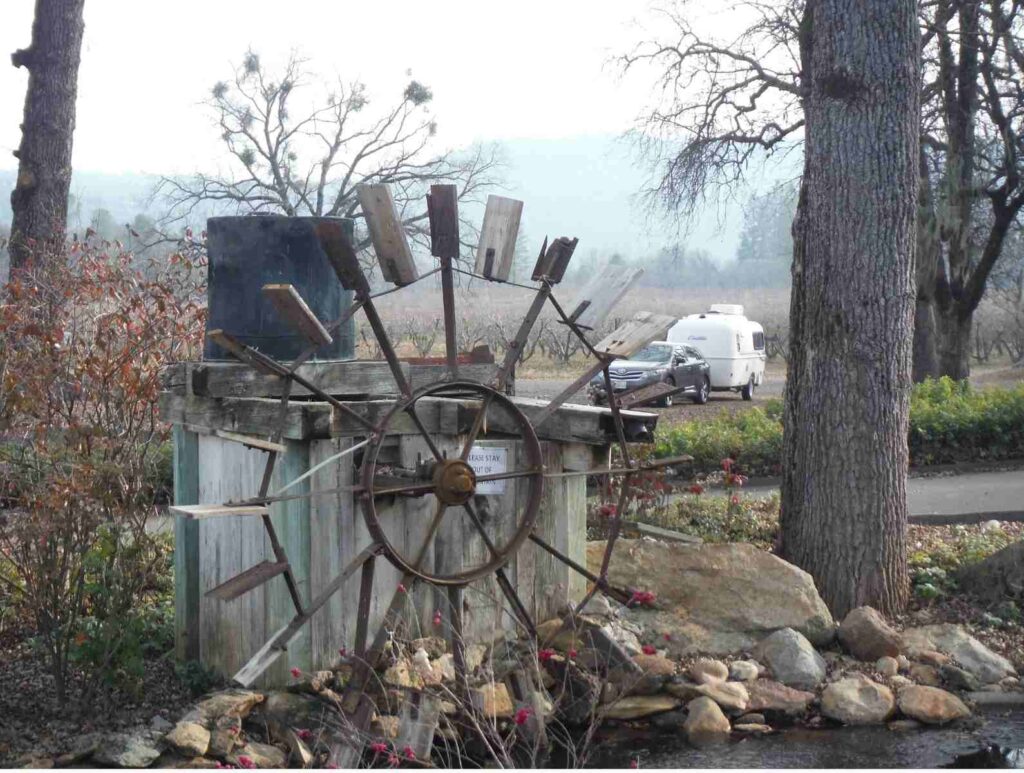
Harvest Hosts is a network of farms, wineries, distilleries and breweries where you can camp for a nominal annual fee. I’m classifying this one as “free” camping even with the annual fee because, after you pay the fee, you can camp for free.
The caviot to Harvest Hosts is that you can only camp for one night. We camp at Harvest Host as a stop over for a longer trip. We have also gone for overnight stays at Harvest Hosts close to home. It makes a great date-night trip and we always enjoy our stay.
Another limitation to Harvest Hosts is that you must have a fully self-contained vehicle. This basically means that you have to have an RV with a bathroom. In addition, your rig will need to have a bed and an indoor kitchen.
Harvest Hosts does not allow pop-up tent trailers. They do, however, welcome hybrid travel trailers and other self-contained RVs.
While at Harvest Hosts, it’s expected that you will make a purchase.
Boondockers Welcome
Like Harvest Hosts, Boondockers Welcome provides a short stay (1-2 nights) for a nominal annual fee.
However, Boondockers Welcome is a little different. With Boondockers Welcome, you stay on private property. Similarly to Harvest Hosts, you’ll need to be in a self-contained vehicle. Boondockers Welcome does accommodate pop-up trailers as long as the trailer is self-contained.
Some Boondockers Welcome locations, like some Harvest Hosts locations, have hook-ups. If you use the hookups at the property of your Boondockers Welcome hosts, you’re expected to compensate your host for that use.
In addition, it’s thoughtful, but not required, to give your host a gift.
Low Cost Camping
If you aren’t interested in camping outside of a campground, consider some low-cost options.
National Forest Campgrounds
I have camped at really nice national forest campgrounds for $12.00 per night. One that we recently camped at even had a dump station. But don’t expect that.
Most national forest campgrounds have limited amenities. They will most always have a toilet, a fire pit, a picnic table, and trash pick up.
Governement Campgrounds
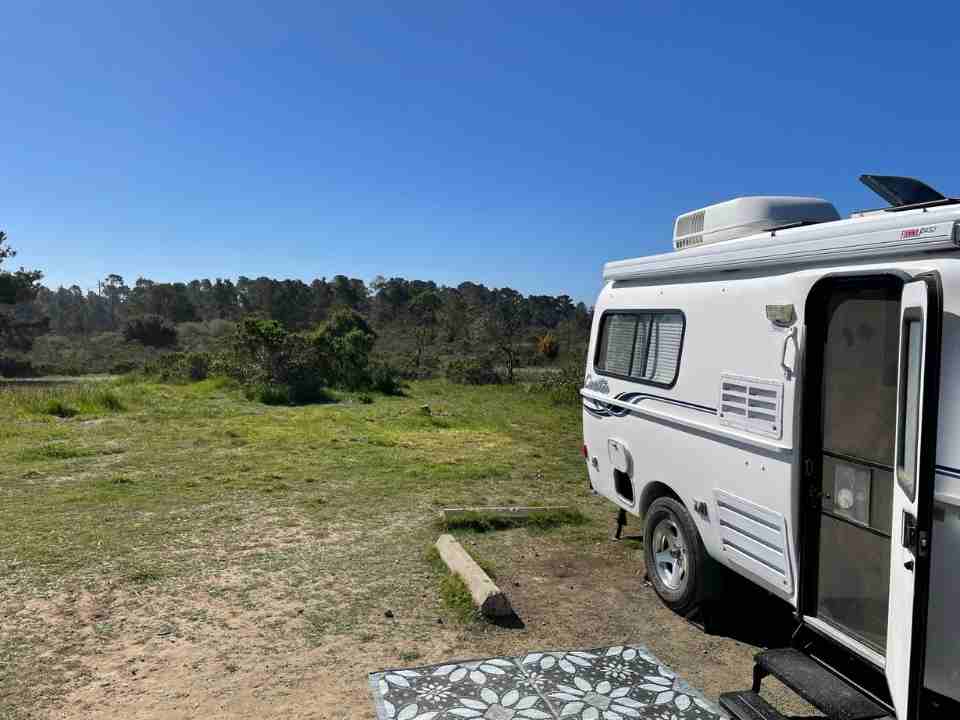
There are several types of government-run campgrounds beside the national forest campgrounds that are low cost.
Many local, County, State, Federal, and Military campgrounds offer inexpensive sites. Keep in mind that you may not get amenities like hookups.
If you’d like to know more about finding inexpensive RV campsites, read the article that I wrote.
2. Save Money on Gas
The price of gas is ridiculous. We completely cancelled our trip to Alaska because of high gas prices.
Instead, we are camping close to home, and you should too. You’d be surprised how many camping options there are near your home.
And, you might be able to drive a couple of hours to enjoy an area that you’ve never visited.
Like I mentioned before, Harvest Hosts is a fun overnight adventure. There is probably a Harvest Hosts location near you.
3. Save Money on Food
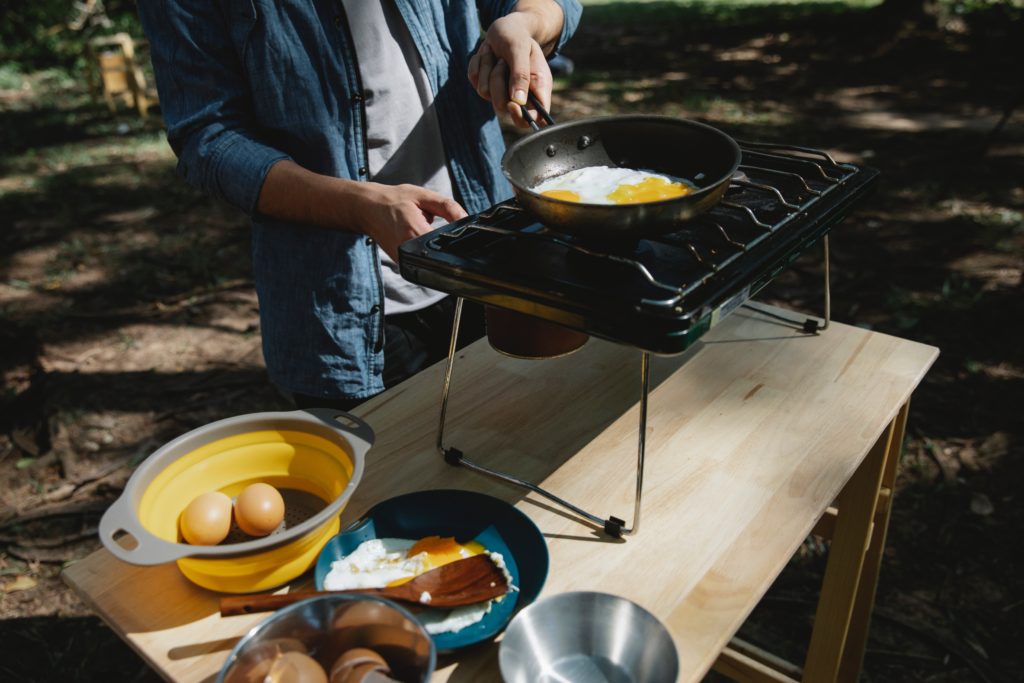
We are really bad about eating out when we camp. If you create a camp menu, and cook your own food, you’ll save money,
Plus, if you cook your own food, you can further reduce costs by preparing food at home. This not only saves money, it saves time.
Nicole, who writes for me, wrote an article about how to save money on camping food.
4. Save on Activities

You can make your own fun. If you’re camping in the wilderness, go hiking or rockhounding. These are both fun activities for adults, but if you have kids, you can make it into an educational adventure.
Consider touring a new, nearby town that you’ve never been to. You could even splurge and get an ice cream.
I have a friend who goes camping so she can read. She is so busy at home, that she never has time to read a novel. Consider bringing a good book while you are camping.
Along with that, you can bring games and cards. A pack of cards is inexpensive and you can get low-cost games at either at the dollar store or a thrift store.
5. Save on Gear
If you don’t have the gear you need in your RV, you can borrow it or purchase low-cost gear.
We stole items from our kitchen to outfit our RV kitchen. We brought blakets and games from home.
In fact, many of the items we are using in our RV came from things we weren’t using at home.
If you’d like more money-saving ideas, I wrote an article on money-saving camping tips. It’s focused on tent camping, but has many ideas that apply to RV camping.
Conclusion
Camping is one activity that you can do on the cheap. By following these money-saving ideas, you can have an adventure the whole family will remember for years to come.
